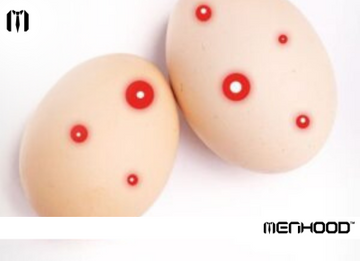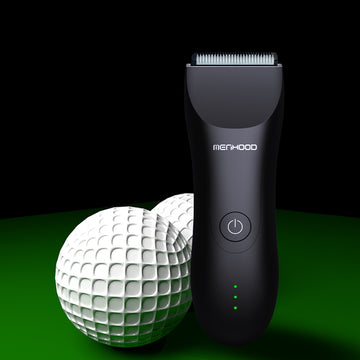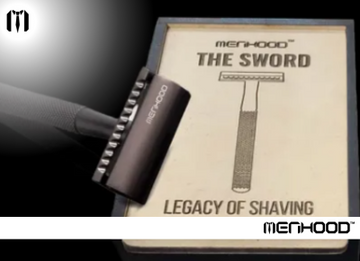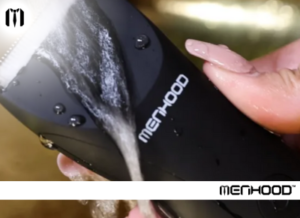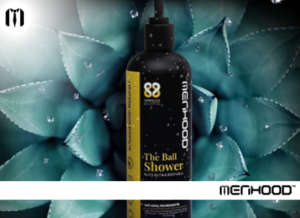Having a pimple on your scrotum can be an uncomfortable and embarrassing situation. While it's not uncommon for men of all ages to experience this, it doesn't make it any less unpleasant.
The most common cause of a pimple on the testicle is folliculitis when hair follicles become infected with bacteria or fungus. Folliculitis can appear anywhere on the body where there is hair, and it typically presents as red bumps filled with pus.
This article will give tips for removing and preventing pimples on the scrotum.
Common Myths and Misconceptions about Scrotal Pimples
When it comes to scrotal pimples, there are some common myths and misconceptions that can be dangerous for your overall health. Here are some of the most common myths about scrotum pimples:
Myth 1: Scrotal Pimples are Always a Sign of an STD
One of the most prevalent myths surrounding scrotal pimples is that they always indicate a sexually transmitted disease (STD). While it's essential to be vigilant about your sexual health, not all scrotal pimples are related to STDs. Pimples can develop due to clogged hair follicles, sweat buildup, or other non-STD-related factors. If you are sexually active and concerned about an STD, getting tested by a healthcare professional rather than assuming the worst is crucial.

Myth 2: Popping Scrotal Pimples is a Good Idea
The urge to pop a pimple is universal, but it's a bad idea, especially regarding scrotal pimples. Popping them can lead to infection, scarring, and further complications. The skin in the scrotal area is delicate, and you risk introducing harmful bacteria by squeezing or picking at pimples. Instead, practice good hygiene, and if a pimple persists or becomes painful, consult a doctor for proper treatment.
Myth 3: All Scrotal Pimples are Painful
While some scrotal pimples can be painful, not all cause discomfort. Many pimples in this area may go unnoticed until you specifically look for them. It's essential to be aware of your body and monitor any changes, but don't automatically assume that the absence of pain means no cause for concern. To rule out any underlying issues, a healthcare professional should evaluate any unusual bump.
Myth 4: Scrotal Pimples are Always Red and Inflamed
Scrotal pimples can take various forms. While some may be red and inflamed, others can be small, white, or flesh-colored. The appearance of a pimple can vary based on its cause and stage of development. It's important not to rely solely on visual cues to determine whether something is a pimple or a more serious condition. If you are uncertain, seek guidance from a healthcare professional for a thorough and accurate diagnosis.
Myth 5: Scrotal Pimples are Highly Contagious
Scrotal pimples themselves are not contagious. They are typically caused by sweat, friction, or bacterial buildup on the skin. Nevertheless, in cases where a pimple results from an underlying infection, maintaining proper hygiene becomes imperative to avoid transmitting the infection to other areas of your body or your sexual partners. Always wash your hands thoroughly and avoid sharing personal items until the issue has been resolved.
Myth 6: Scrotal Pimples Can Be Treated with Over-the-Counter Acne Products
While over-the-counter acne products may work for facial acne, they are not always suitable for scrotal pimples. The skin on the scrotum is thinner and more sensitive, and using harsh acne products can exacerbate the issue or cause irritation. It's best to consult a dermatologist or urologist who can recommend appropriate treatment options tailored to your situation.
Various Types of Pimples that can occur on the Scrotum
The scrotum is more prone to certain pimples than other body areas. Here are some of the most common ones:
1. Whiteheads
Whiteheads are tiny, raised bumps on the skin that appear white. They typically form when a pore is clogged with dead skin cells and sebum, which hardens into a plug. White pimples on the scrotum are the most common type of pimple on the scrotum, and they require gentle treatment.
2. Blackheads
Blackheads resemble whiteheads but have a darker hue resulting from the oxidation of sebum and dead skin cells trapped within the pore. They often occur in areas with higher concentrations of oil glands, such as the face, nose, and scrotum.
3. Acne
Acne is an inflammation-based skin condition triggered by the blockage of pores and the presence of bacteria. It can appear as whiteheads, blackheads, pimples, or cysts on the scrotum or other body areas. Acne on the scrotum should be treated with special care, as it can become infected easily due to its delicate nature.
4. Cysts
Cysts are large, painful lumps that form deep within the skin. They can occur on any part of the body, including the scrotum. A doctor should treat cysts, often requiring surgical removal or draining to heal properly.

5. Folliculitis
Folliculitis is a hair follicle infection that may result in red, itchy bumps on the skin. Such bumps may contain pus or fluid and frequently manifest in regions characterized by heightened friction or abundant hair, including the scalp, beard, and scrotum. A doctor should treat folliculitis as an underlying infection that can cause it.
Causes of Scrotal Pimples
Here are the various causes of scrotal pimples to help you better understand why they occur:
1. Folliculitis:
One of the most common causes of pimples on the scrotum is folliculitis. Folliculitis develops when hair follicles become inflamed or infected. This can happen due to friction from tight clothing, shaving the pubic area, or simply because of sweat and bacteria buildup in the groin region. The result is small, red, and often itchy pimples that can be mistaken for other skin conditions.
2. Ingrown Hairs:
Ingrown hairs can also lead to pimple-like bumps on the scrotum. When a hair follicle becomes obstructed or if the hair curls inwards instead of growing outward, it can result in inflammation and the development of a pimple. Shaving or waxing the pubic area can increase the risk of ingrown hairs.
3. Sweat and Heat:
The scrotum is a prime location for sweat buildup due to its anatomy. Excessive sweating, especially in hot and humid weather or during physical activities, can create a favorable environment for developing pimples. The combination of sweat, dead skin cells, and bacteria can lead to pore blockages and irritation.
4. Poor Hygiene:
Maintaining good hygiene prevents scrotal pimples. Failing to clean the genital area regularly can accumulate sweat, bacteria, and oils, contributing to the formation of pimples. It is crucial to cleanse the genital area using gentle soap and lukewarm water, ensuring thorough drying after taking a shower.
5. Friction:
Friction from tight underwear or clothing can irritate the scrotal skin, leading to pimples. Opting for breathable, moisture-wicking underwear and avoiding tight-fitting pants can help reduce friction and minimize the risk of pimples.
6. Allergic Reactions:
Sometimes, scrotal pimples can result from an allergic reaction to detergents, fabric softeners, or other personal care products that come into contact with the genital area. If you suspect an allergic reaction, switching to hypoallergenic products may help.
7. STDs and STIs:
While pimples on balls are often benign, it's essential to consider the possibility of sexually transmitted infections (STIs) or diseases (STDs) if you engage in unprotected sexual activity. Some STIs can cause symptoms such as genital sores, bumps, or rashes, which may resemble pimples. If you suspect an STI, seeking medical attention promptly is crucial.
The Common Symptoms Associated with Scrotal Pimples
Scrotal pimples are uncommon, but when they occur, there are certain symptoms to look out for. A small, white bump or pimple on the scrotum is the most obvious symptom. These bumps may be tender and sore to the touch. Other symptoms associated with scrotal pimples include itching, a burning sensation in the area surrounding the pimple, and redness or discoloration.
If the pimple becomes inflamed, it may become painful and filled with pus. In some cases, a fever or chills can occur if an infection is present.
In addition to the physical symptoms, scrotal pimples can also cause emotional distress. Men who develop pimples on the scrotum may feel embarrassed or ashamed of their appearance, leading to low self-esteem or anxiety.
Tips to Prevent Scrotal Pimples
Scrotal pimples can be uncomfortable and embarrassing, but they are usually harmless. Here are some tips to help prevent scrotal pimples:
1. Maintain Good Hygiene:
One of the most vital measures in preventing scrotal pimples is the maintenance of proper hygiene. Because the skin in the genital area is sensitive to irritation, ensuring cleanliness is imperative. Here are some hygiene tips to follow:
- Regularly Wash the Area: Use a mild, fragrance-free soap and lukewarm water to cleanse the scrotum gently. Avoid using harsh or scented soaps, as they can irritate the skin. Menhood™ Ball Shower is a gentle and effective body wash specifically designed for the delicate area.
- Pat Dry, Don't Rub: Pat the scrotal area dry with a clean towel after washing. Avoid vigorous rubbing, as this can lead to skin irritation.
- Change Underwear Daily: Regularly changing your underwear daily aids in averting the accumulation of sweat, bacteria, and dead skin cells, which have the potential to obstruct pores and result in pimples.
2. Choose the Right Underwear:
The type of underwear you choose can significantly impact the health of your scrotal skin. Opt for breathable, moisture-wicking fabrics like cotton or moisture-wicking blends. Avoid tight underwear, which can trap sweat and create a breeding ground for pimples. Instead, go for looser-fitting, comfortable options that allow airflow. Menhood™ Boxer Briefs are a great option, providing support and breathability without compromising comfort.

3. Avoid Excessive Friction:
Friction can irritate the scrotal skin, leading to pimples and discomfort. To prevent this, follow these guidelines:
- Wear Loose-Fitting Clothing: Avoid tight pants or shorts that can rub against the scrotum. Opt for loose-fitting clothing, especially during hot and humid weather.
- Use Lubrication During Intercourse: If you're sexually active, use appropriate lubrication to reduce friction and irritation.
4. Exfoliate Gently:
Regular exfoliation can help prevent pimples by removing dead skin cells that can clog pores. However, be cautious not to over-exfoliate, as this can lead to irritation. Use a mild exfoliating scrub for sensitive skin sparingly, no more than once or twice a week.
5. Stay Dry:
Excess moisture can contribute to scrotal pimples. After physical activities or a hot day, thoroughly dry the scrotal area. A gentle talcum powder without fragrances or irritants can also help absorb moisture and keep the area dry.
6. Avoid Harsh Chemicals:
Be mindful of the products you use near your scrotal area. Harsh chemicals in lotions, creams, or powders can irritate the skin and potentially lead to pimples. Select products designed specifically for sensitive skin and steer clear of those containing fragrances or alcohol.
7. Watch Your Diet:
While the link between diet and scrotal pimples isn't well-established, maintaining a healthy diet can contribute to overall skin health. Emphasize a well-rounded diet with ample fruits, vegetables, and whole grains while ensuring adequate hydration by drinking plenty of water to moisturize your skin.
Conclusion
While scrotal pimples are typically not a cause for concern, it is crucial to comprehend their possible origins and adopt preventive measures. Practicing proper hygiene, wearing loose-fitting clothing and breathable fabrics, and avoiding harsh chemicals can help reduce the risk of scrotal pimples. If you experience any concerning symptoms, such as pain or a rash that doesn't go away, seek medical attention promptly. With the right care, you can help protect your scrotal skin and reduce the risk of developing pimples.
FAQs
Q.1 What are the causes of acne on the scrotum?
The main culprit for acne on the scrotum is an overproduction of sebum, a substance produced by the skin's sebaceous glands. The surplus oil can obstruct pores, giving rise to inflammation, which in turn causes the formation of red bumps, whiteheads, and blackheads, which could become infected.
Other factors that can cause scrotal acne are sweat and friction from clothing, stress, certain medications, and hormones.
Q.2 How do I treat pimples on my scrotum?
The best way to treat pimples on the scrotum is to keep the area clean and dry. Steer clear of tight attire or synthetic fabrics that retain moisture against your skin. Additionally, consider using over-the-counter treatments with benzoyl peroxide or salicylic acid, which can effectively reduce inflammation and aid in clearing bumps in certain instances. If the pimple becomes infected, you may need a prescription antibiotic.
Q.3 Are there any home remedies I can use for scrotum acne?
Household remedies like tea tree oil, apple cider vinegar, and aloe vera possess the potential to alleviate inflammation and provide comfort to the skin. If used correctly, these natural ingredients can effectively treat scrotal pimples.
Q.4 Are there any lifestyle changes I should make?
Yes! Ensuring proper hygiene is a fundamental aspect of preventing and managing scrotal acne. Wear loose-fitting clothing and breathable fabrics that allow your skin to breathe, avoid harsh chemicals in soaps and lotions, and exfoliate gently. Consuming a nutritious diet and staying well-hydrated by drinking ample water can also contribute to maintaining the cleanliness and hydration of your skin.
Q.5 What are the most common symptoms of scrotal acne?
The most common symptom of scrotal acne is a cluster of small, red bumps on the scrotum. Sometimes, the bumps may be filled with pus or have a whitehead. Additionally, scrotal pimples may cause itching and burning sensations.

